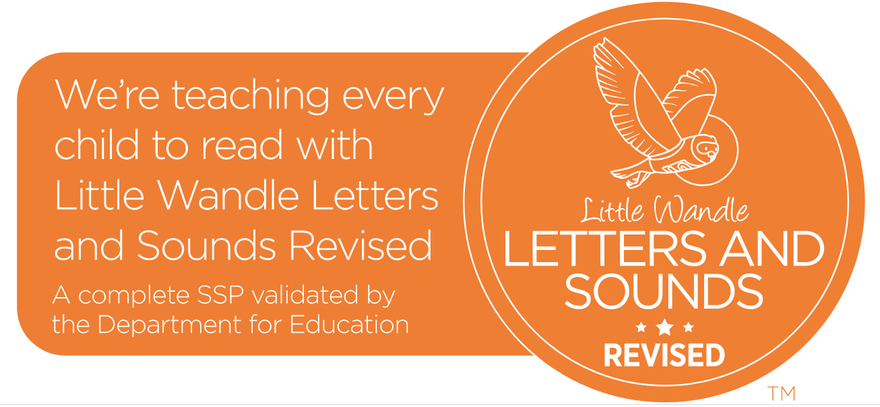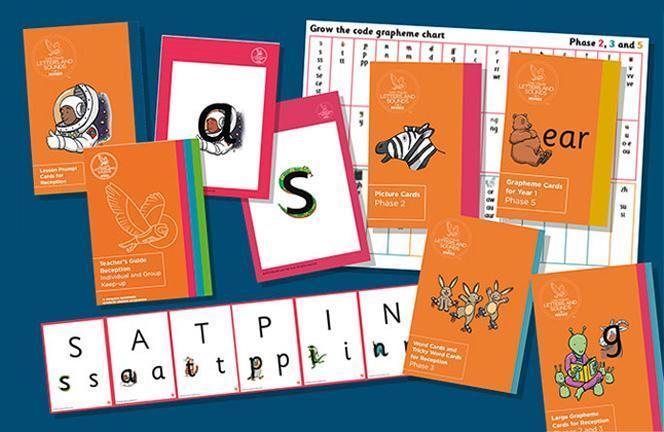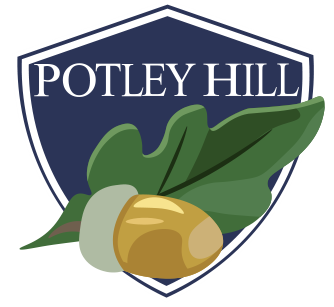Phonics
At Potley Hill Primary School, we believe that for all our readers to become fluent readers and writers, phonics must be taught through a systematic and structured phonics programme.
We use Little Wandle Letters and Sounds Revised to plan and provide daily, engaging phonics lessons. In phonics, we teach children that the letters of the alphabet represent a different sound, that these can be used in a variety of combinations and are put together to make words. The children learn to recognise all of the different sounds and combinations that they might see when they are reading or writing.
Our phonics teaching starts in Year R and follows a very specific sequence that allows our children to build on their previous phonic knowledge and master specific phonics strategies as they move through school. As a result, all our children are able to tackle any unfamiliar that they might discover.
At Potley, we also model these strategies in shared reading and writing, both inside and outside of the phonics lessons and across the curriculum. We have a strong focus on the development of language skills for our children because we know that speaking and listening are crucial skills for reading and writing in all subjects.
How do we teach phonics?
- In Reception and Year 1, children follow the progression within Little Wandle Letters and Sounds Revised programme. Phonics is taught daily and there is a review session on a Friday.
- Phonics starts in Reception in Week 2 to ensure the children make a strong start.
- By the end of Reception, children will have been taught up to the end of phase 4.
- By the end of Year 1, children will have been taught up to the end of phase 5.
- Reception lessons start at 10minutes, with daily additional oral blending, increasing to 30minutes as soon as possible.
- In Year 1, lessons are 30minutes long.
- In Year 2, phonics lessons are taught daily to children where appropriate - following the model of Little Wandle but plugging specific gaps identified through assessment.
How do we assess phonic knowledge?
- At the end of each week in Reception and Year 1, there is a review session which recaps the learning. There are also whole review weeks (pre-planned and bespoke review weeks to address gaps identified by the class teacher's ongoing formative assessment).
- Children identified in Reception and Year 1 as in danger of falling behind are immediately identified and daily 'keep up' sessions are put in place - sessions follow the Little Wandle Letters and Sounds Revised programme.
- In Reception and Year 1, the children are assessed at the end of every half term using the Little Wandle Letters and Sounds Revised assessment tracker.
- The children in Year 1 sit the Phonics Screening Check in the summer term.
- Children who do not pass the Phonics Screening Check in Year 1, will re-sit this in Year 2.
- Children who are in Year 2 - Year 6 and need 'catch up' sessions are assessed through teacher's ongoing formative assessment as well as half termly summative assessments.
How can I support my child in Phonics?
Watch the following videos to help you with the pronunciation of the graphemes that you child will be learning at school.
Watch these videos which show you how we teach the children to read tricky words, and how to blend.
Overview of Learning
This programme overview shows the progression of GPCs and tricky words that we teach term by term. The progression has been organised so that children are taught from the simple to more complex GPCs, as well as taking into account the frequency of their occurrence in the most commonly encountered words. All the graphemes taught are practised in words, sentences, and later on, in fully decodable books. Children review and revise GPCs and words, daily, weekly and across terms and years, in order to move this knowledge into their long term memory.


